“Left Performance Histories” at nGbK in Berlin
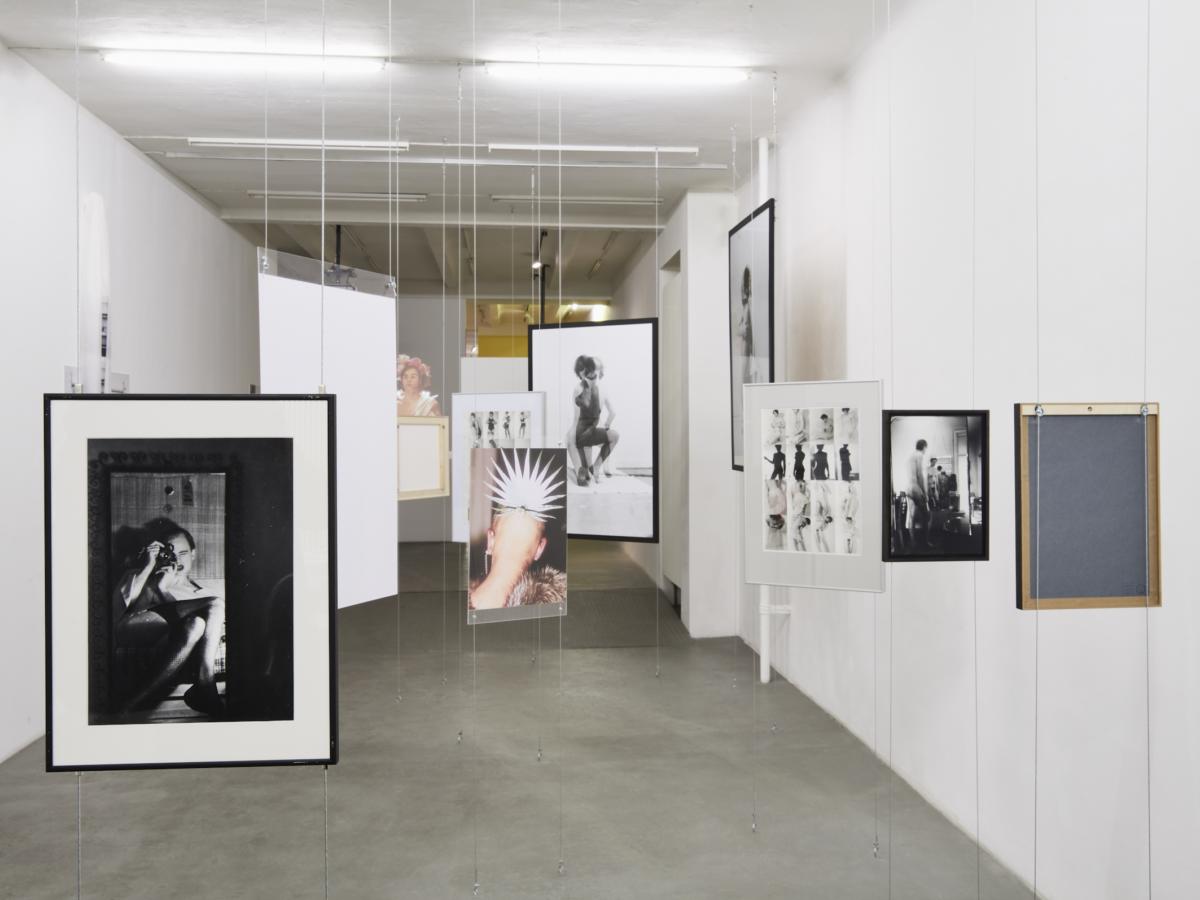
Dorian Batycka
Left Performance Histories and the Disembodied Witness
Berlin—At nGbK, a new exhibition called Left Performance Histories gives a platform to a polyphony of voices who have used performance in defiant, nonconforming ways. Initiated out of a curatorial research project, Action Art Behind the Curtain in 2014, curators Judit Bodor, Adam Czirak, Astrid Hackel, Béata Hock, Andrej Mircev, and Angelica Richter sought to re-examine the action based artwork from South-East Europe prior to the fall of communism. The show contains works by Ewa Partum, Vlasta Delimar, Orshi Drozdik, Sanja Iveković, Sven Marquardt and others, artists who at one point or another challenged entrenched socialist conceptions of the self.
The exhibition is comprised predictably of archival materials: videos, photographs, and ephemera. It presents a balance between conceptual, body and feminist based practices of politically left-leaning performance artists. In Sanja Ivekovic’s landmark Trokut (Triangle) (1979), for example, photographs of the artist are displayed form an earlier action she made during a visit by the former Yugoslav Prime Minister Joseph Tito to Zagreb in May 1979. The 18-minute performance of the artist sitting on her balcony drinking whiskey and mimicking masturbation whilst Tito’s caravan passes by on the street below is emblematic of a work that attempts to personalize the political.
Examining the limits of the female body in public space in Hungary, Orshi Drozdik’s socially and publicly engaged works offer some meditation on gender, war, and conflict. Starting in the 1970s with body art, Drozdik infused her actions with disembodied notions of femininity, such as in Individual Mythology, a work she created in the 1970s that overlaid pictures of famous dancers with Drozdik’s own dance patterns whilst projected images of Hungarian history were displayed on her body. Some of these works and experiences came from her association to “Rozsa” (Roses), a group of post-conceptual artists active in Budapest between 1976-78.
Unanswered in the exhibition is exactly what curators mean by the ‘Left,’ the tepid varieties and different forms of socialism beyond colonizing interpretations of Eastern Europe as one coherent ‘bloc.’
Back in the GDR, some artists from behind the iron curtain focused on using the body as a means of radically circumventing the relationship between performer and audience. Formed during the summer of 1982, the group “Gruppe 37,2” (represented in the exhibition by the work of Hans-Joachim Schulze & Peter Oehlmann), developed a process-based approach to performance by incorporating elements from experimental music. These “work processes” and “action algorithms,” as the Group defined them, took the form of events combining gestural painting, dance, and pantomime, using different media to enter into a communicative dialogue with audience members who in turn became embedded and transformed into collaborators.
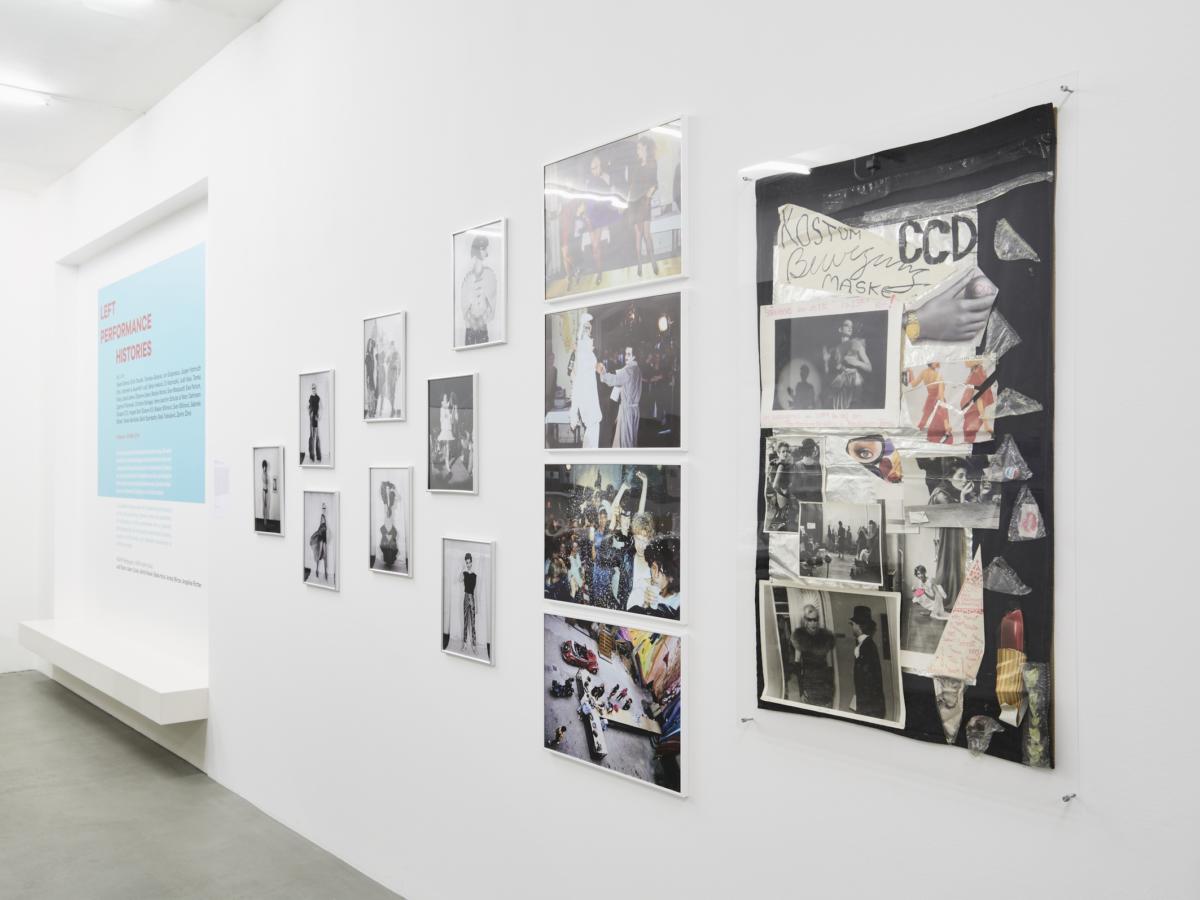
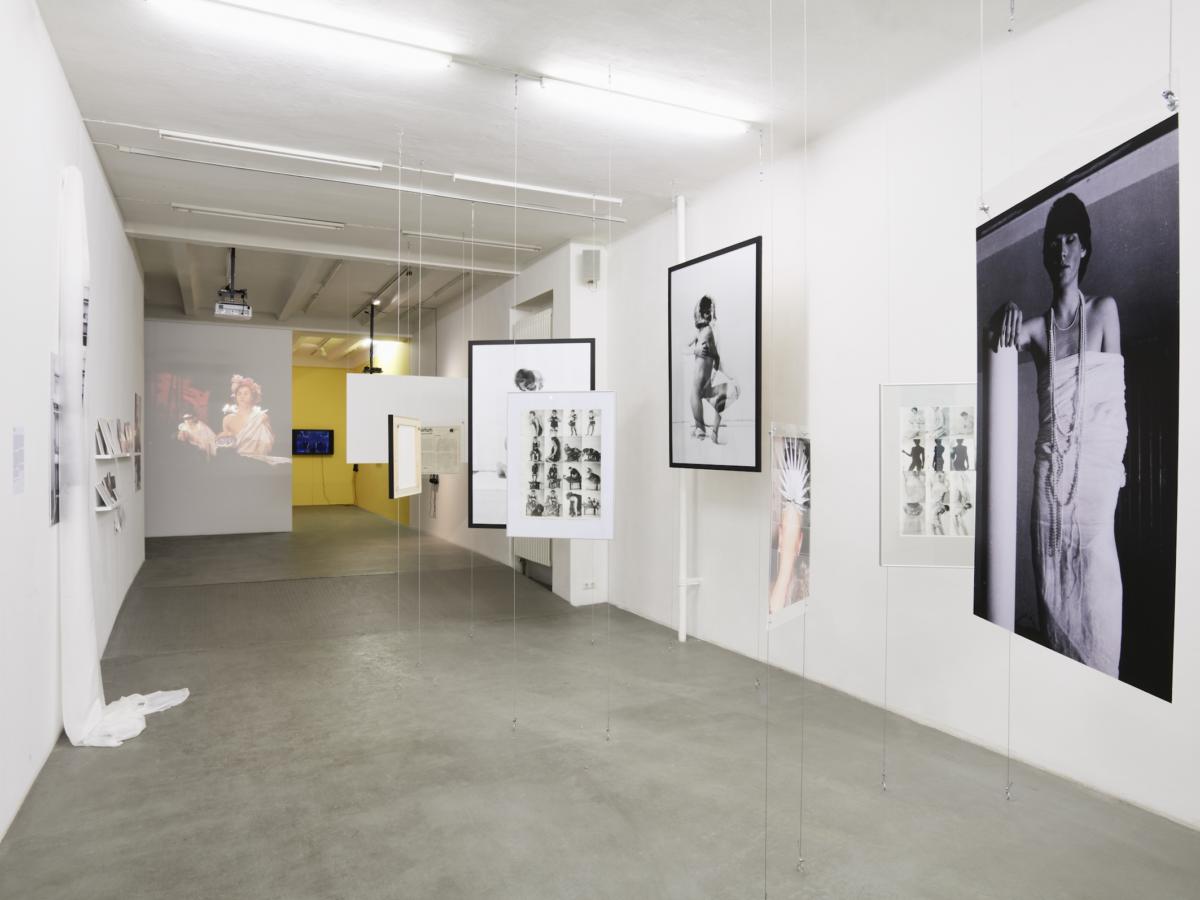

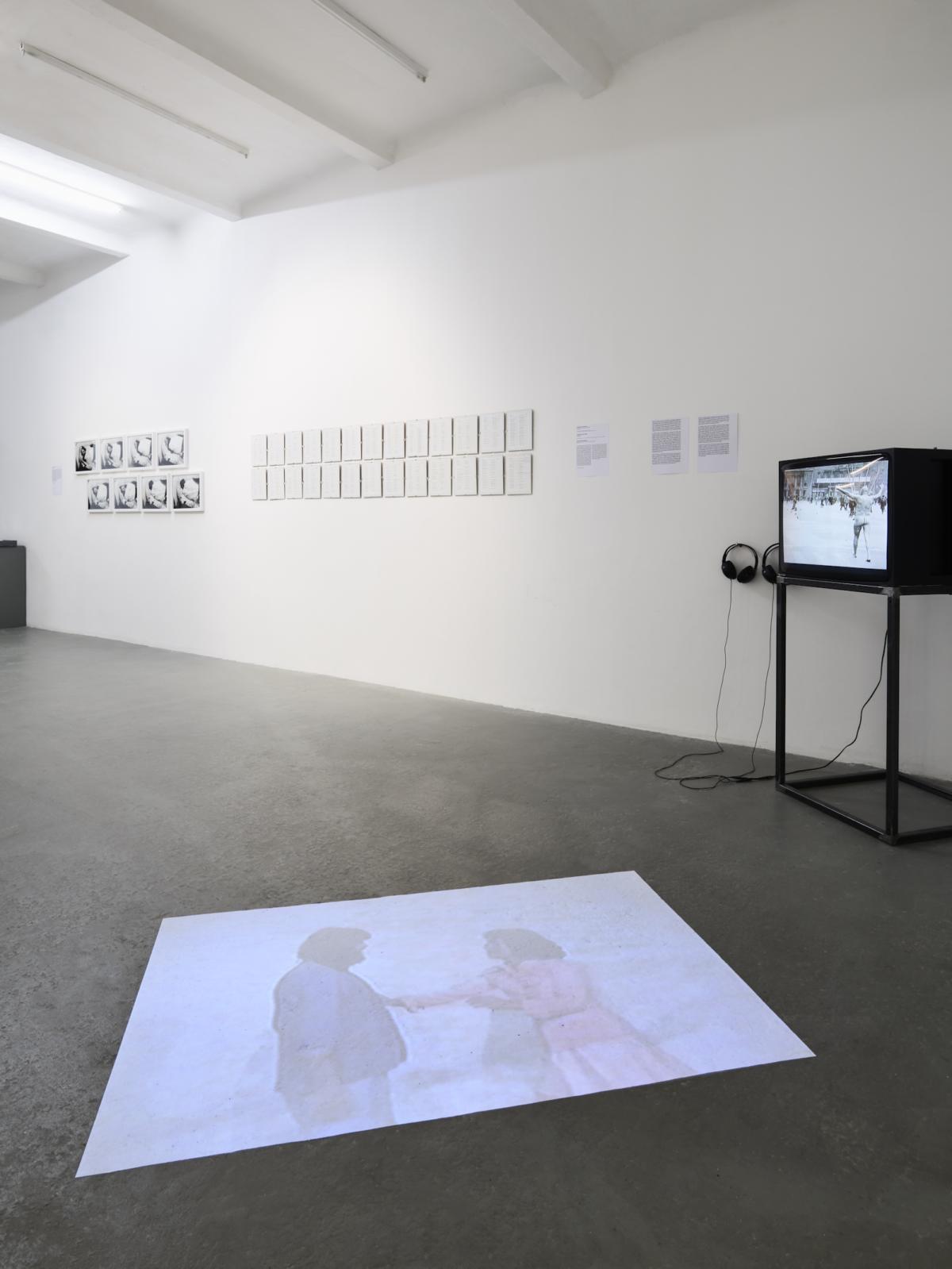
Yet exhibiting performance can sometimes feel like a funeral. Documentation of past events forming into eulogies where old repertoires become tired and cliched at best, overly curated and didactic at worst. But relics of by-gone performance can–when presented with adequate social and political context–become critical to understanding the actionist impulse behind them, which can, in turn, inspire new generations of artists interested in themes like public space and performative activism.
Unanswered in the exhibition is exactly what curators mean by the ‘Left,’ considering that there were many tepid varieties of socialism beyond colonizing interpretations of Eastern and Central Europe as one coherent ‘bloc.’ Even more so considering that many of the artists in the exhibition are from different socialist states, some of which like Poland and the GDR were dominated by the Soviet Union, while others like the former Yugoslavian states were under the socialist umbrella of Tito, whose rise to power as one of the principal architects behind the Second Yugoslavia, a socialist federation that lasted from November 1942 until April 1992, implemented a totally different style of socialism than that which existed in the Soviet Union. In Tito’s Yugoslavia, workers had considerably more leeway in terms of self-management and access to market mechanisms but were nevertheless under a tight political monopoly of power by the Communist League of Yugoslavia. Tito became an instrumental figure known for developing a foreign policy called “cominform” that sought to defy Soviet hegemony in socialist states. Under Tito, Yugoslavia became one of the founding states of the Non-Aligned Movement, a group of states not formally aligned with or against any major power bloc, i.e., neither to the United States nor the Soviet Union. Together, the states associated with the Non-aligned Movement attempted to form a third way between socialism and capitalism, remaining neutral to the major global power blocs who were seen as performing a dangerous dance of nuclear cold war tango.
Though the exhibition doesn’t exactly gloss over this crucial political divide, it does however largely ignore a very important and critical debate within performance art itself. Particularly: whether or not it can be documented, archived, and later exhibited. In 2012, a debate on this topic was commissioned by Hyperallergic, which featured leading artists and curators like Marni Kotak, who said that “A performance itself cannot be collected, because, as life, it can never be truly contained. The ephemerality of a performance can never be taken away regardless of any attempt to commodify it; it just is.” In a way, this discourse was largely omitted from the exhibition itself, which as a result felt a bit too stoic.
While documentation of a performance by essence is a human impulse, the works in Left Performance Histories ultimately fail to achieve the essential in-situ-ness required of performance to resonate beyond the white cube.
Above all, the exhibition felt littered with the detritus of old documentation whereby the viewer becomes a disembodied event witness to the document of a previous action. While documentation of a performance by essence is a human impulse, the works in Left Performance Histories ultimately fail to achieve the essential in-situ-ness required of performance to resonate beyond the white cube. The exhibition felt more like an art historical research project, rather than a piece of radical contemporary performance art, which is totally OK given that this was essentially the expressed intention of the working group behind the exhibition, Action Art Behind the Curtain. By reflecting on the history of performance art the viewer is asked to bear witness to the long and complex strata of actions that occurred in various socialist states. In doing so, the exhibition provides some critical counter-narratives to colonial Western interpretations of performance art by way of the so-called ‘Eastern Bloc,’ a severely under-researched area of art historical inquiry and one that this exhibition makes an excellent attempt at correcting.
Vanessa Gravenor
Giving A Face to the Archive, The Lecture Series of Left Performance Histories
Consolidated now into archives run by artists, families, or academics, the lecture series accompanying the exhibition Left Performance Histories, gave a face to the voices that now carry on the avant-garde actions that make up the exhibition program. Once conceived as ephemeral interventions in public space, the domestic sphere becomes the collecting grounds for memory. Perhaps it is fittingly so, as many of the artists from Eastern Europe in the 1970s were interested in exiting the museum space where government-sanctioned aesthetics of Soviet realism dominated. The private sphere was seen as a space for resistance.
Talking about her late husband, acclaimed leader of the Group of Six, Mladen Stilinović, Branka Stipanicić explained how he often used his home as synonymous to the exhibition space. Stipanicić, who now runs Stipanicić’s archive from their home in Zagreb, claims how the absence of a studio is something many of the artists at the time shared. Stilinović instead used books as exhibitions and like his contemporary Sanja Iveković’s acclaimed book Double Life he worked with collage to address the social relations of the times. The aim was to seek an “autonomous art venue” in the form of “exhibition-actions” that could occur in the streets or around a table. During the talk, Stipanicić showed some of Stilinović’s archived collages that were pasted into notebooks. The edges of the photographs are slightly frayed and the tape that was used to glue them in place has developed a yellowish tinge. The presentation of the current archives shows the effects of time on the DIY craft.
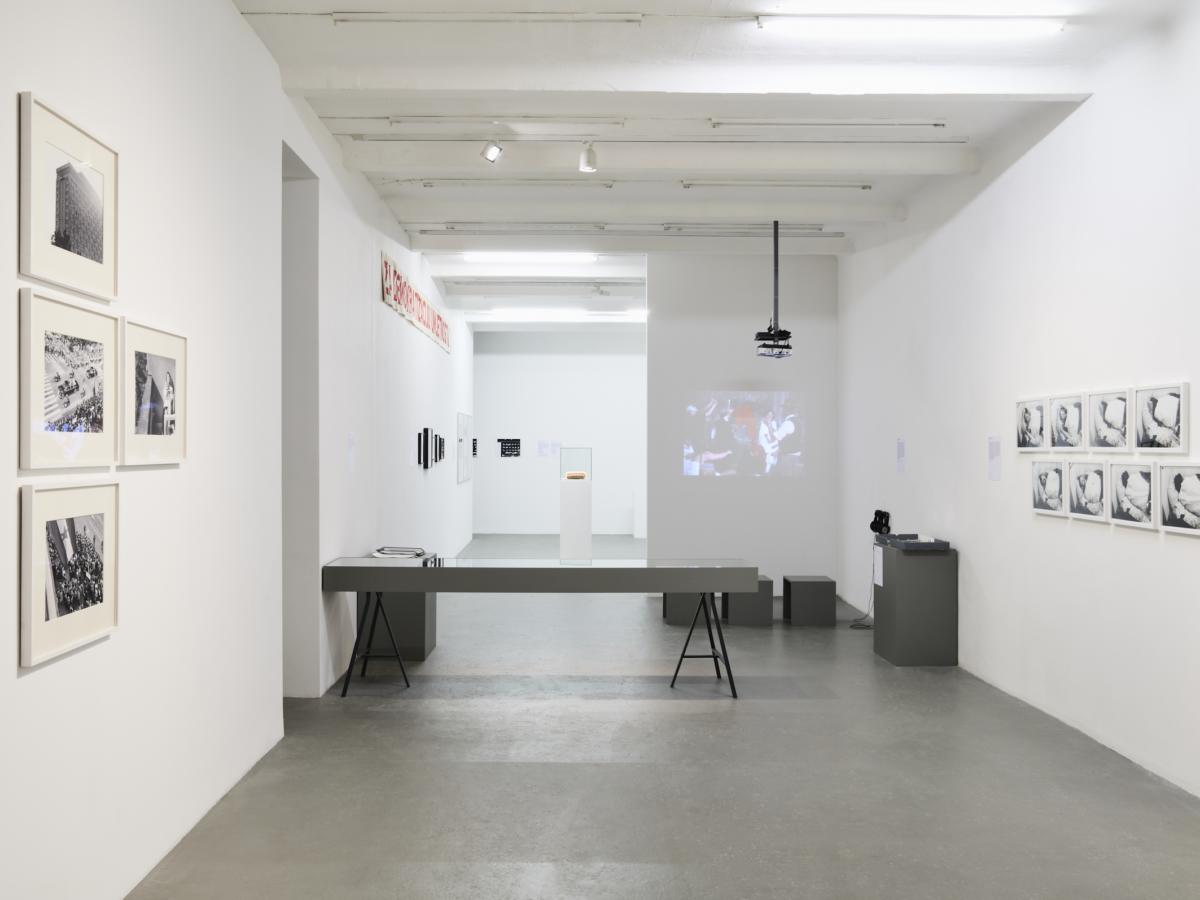
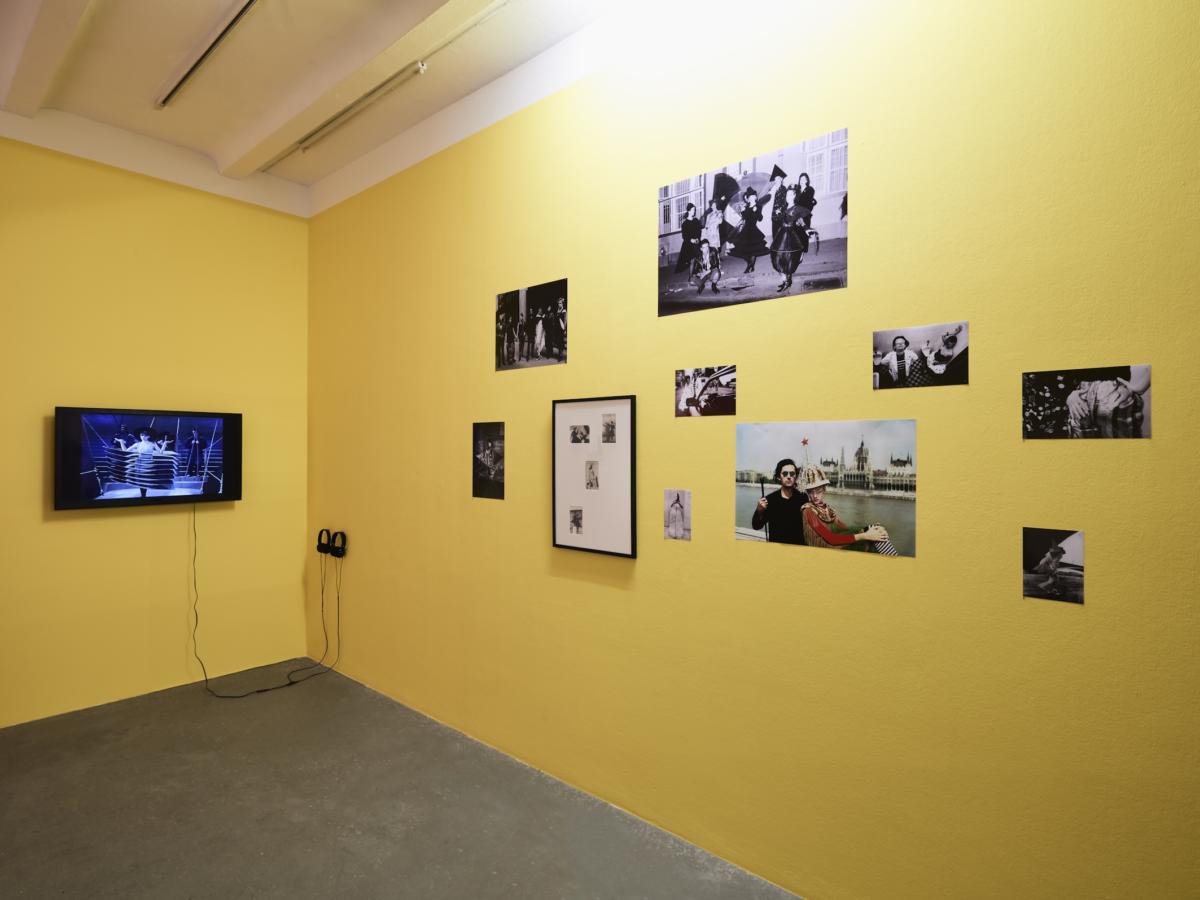
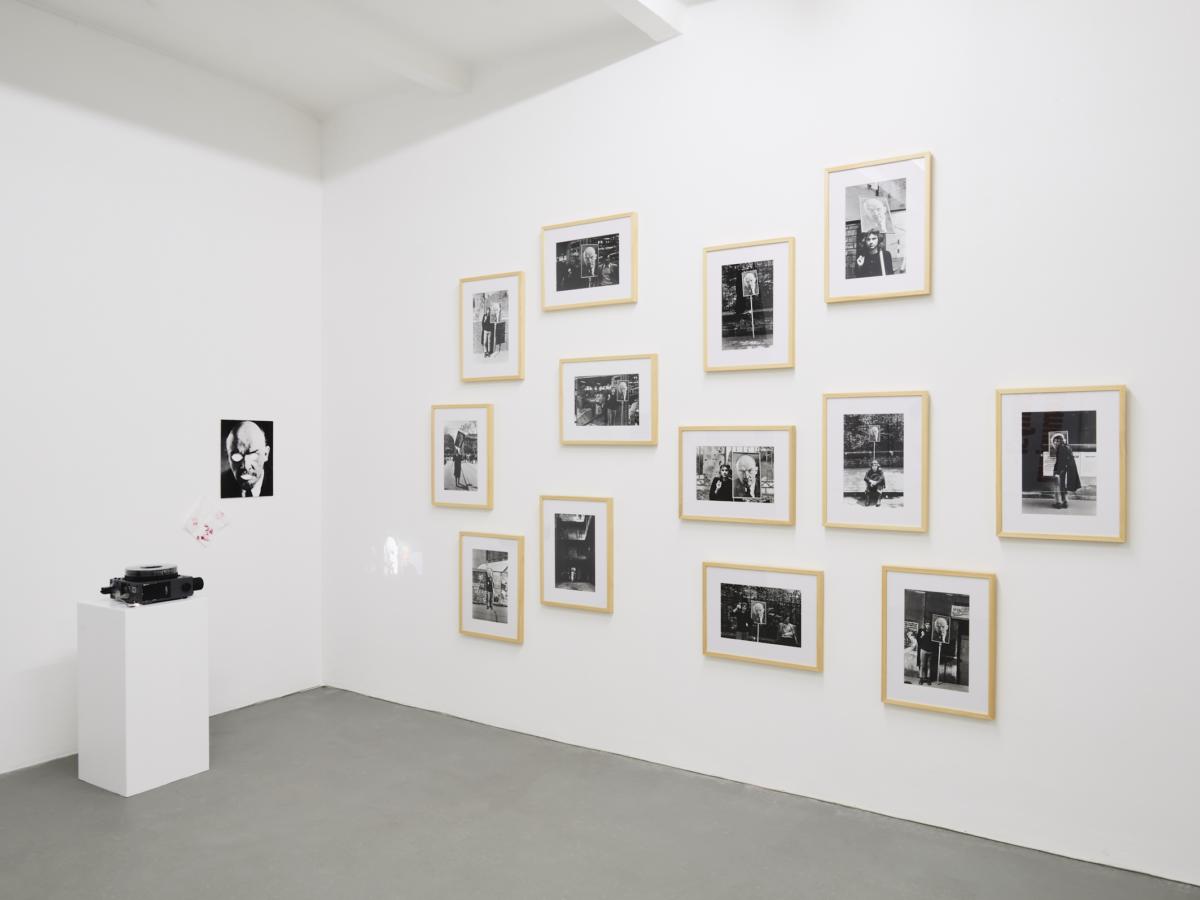
In dialogue with Polish artist Ewa Partum, Karolina Majewska–who now works with her archive in Berlin–discussed the social significance of Partum’s actions. Much of Partum’s performances occurred outside of the venerated museum space. She also worked with photocollage to change the reality of the image–a labored process at the time. She quipped that it was a “photo” without the “shop.”
Partum, who heralded the genre of feminist performance art in Poland in the 70s and 80s, questioned how women performed her assigned role both in private and professional life. In private life, she argued, especially in the totalitarian Soviet regime in Catholic Poland, a woman was defined by the man she married. In the gallery, a woman was only valuable if she was young and (as she aged) only if she is married.
Such ideas are epitomized in works such as Change (1974) performed in Łódź, Poland, where a make-up artist alters half of Partum’s naked body to “age” it. Other works like Partum’s Women Marriage is against you! (1980), where the artist wore a long wedding dress in a gallery in Poznan to draw attention to the economic exchange of marriage, foreground the centrality of gender in Partum’s work. Partum considered her own marriage later in Berlin as a private performance that was authenticated by a certificate. She invited the public to a private art event to further confuse the spheres. At nGbk, Partum explained to the audience how when her marriage dissolved due to domestic violence, but that the image of the abuse gained value with collectors, proving her theory that a woman in every way remains an object in the art market.
One valuable and critical point the lecture draws attention to is how this avant-garde performance was often seen as an expression of the Western bourgeoisie in opposition to the project of Socialist Realism.
In dialogue with these ideas, specially commissioned performances by Judit Kele and Katalin Ladik (contemporaries of Partum), whose are also included in the exhibition, revived discussions around the aging subject of the female artist. In her performance, Kontraktus, Célebration Sologame, Judit Kele undergoes a marriage ceremony to marry herself. Through her 40 year career, the Hungarian artist has auctioned herself off as an artwork, often bringing attention to the monetary function that Eastern European women fetch in the West. In the gallery, by marrying herself, Kele seems to declare her autonomy as a result of her own autonomous art value. In the performance Alice in Codeland, Katalin Ladik, also meditating on the aging subjectivity of woman, finds herself in the role of the youthful Alice in Wonderland. Ladik, whose performance is brave yet verges on theatrics uncharacteristic of the works seen in the exhibition, performs alongside a rouged mannequin double. Ladik enters the performance by walking through the audience with a rolling shopping trolley. She then asks some members of the audience if the seat next to them is free. Once on the stage, she pulls out a cabbage and a pair of stuffed stockings. Ladik sings, grunts, and performs gestures that have sexual connotations. The result is a performance that was unsettling and uncomfortable for the viewer, where one is constantly unclear if the actor is indeed acting or acting out herself.
Leftist Actions Founded in Marxism not Covered By the Exhibition
One valuable and critical point the lecture draws attention to is how this avant-garde performance was often seen as an expression of the Western bourgeoisie in opposition to the project of Socialist Realism. Serbian scholar Bojana Matejic brought up some art practices behind the iron curtain that were founded in Marxist ideology. Such was the “non-conformist social behavior” and Danko Grlić’s Contra Dogmatics, ideas that influenced the Student Culture Center praxis group in Yugoslavia, which included Marina Ambromović, Raša Todosijević, Neša Paripović, Zoran Popović, Slobodan Era Milivojević, Gergelj Urkom. This group was very much influenced by Beuys’ visit to Belgrade and his lecture on post-pedagogical performance. Beáta Hock also talked about actions in Poland that were founded in socialist thinking and Marxist ideology. Hock gave the example of Zygmunt Piotrowski’s Priorgit I & II, a series of two slideshows that critiqued the current President’s Edward Gierek “Polite Face of Communism,” who was installed after the violent Gdańsk 1970 shipyard strike to appease the public. These two speakers brought up interesting and valid complications to the narrative of what constitutes leftist performance action, which one sees in the exhibition.

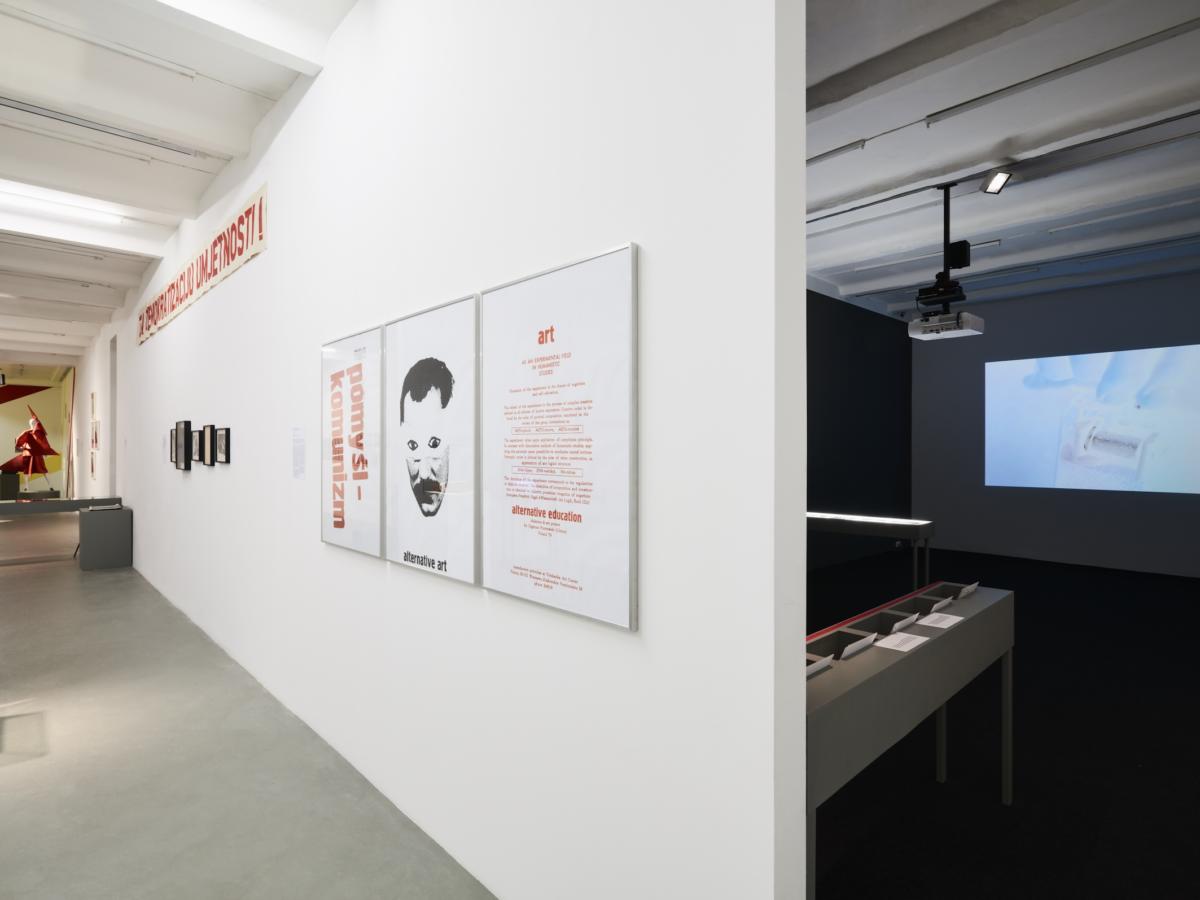
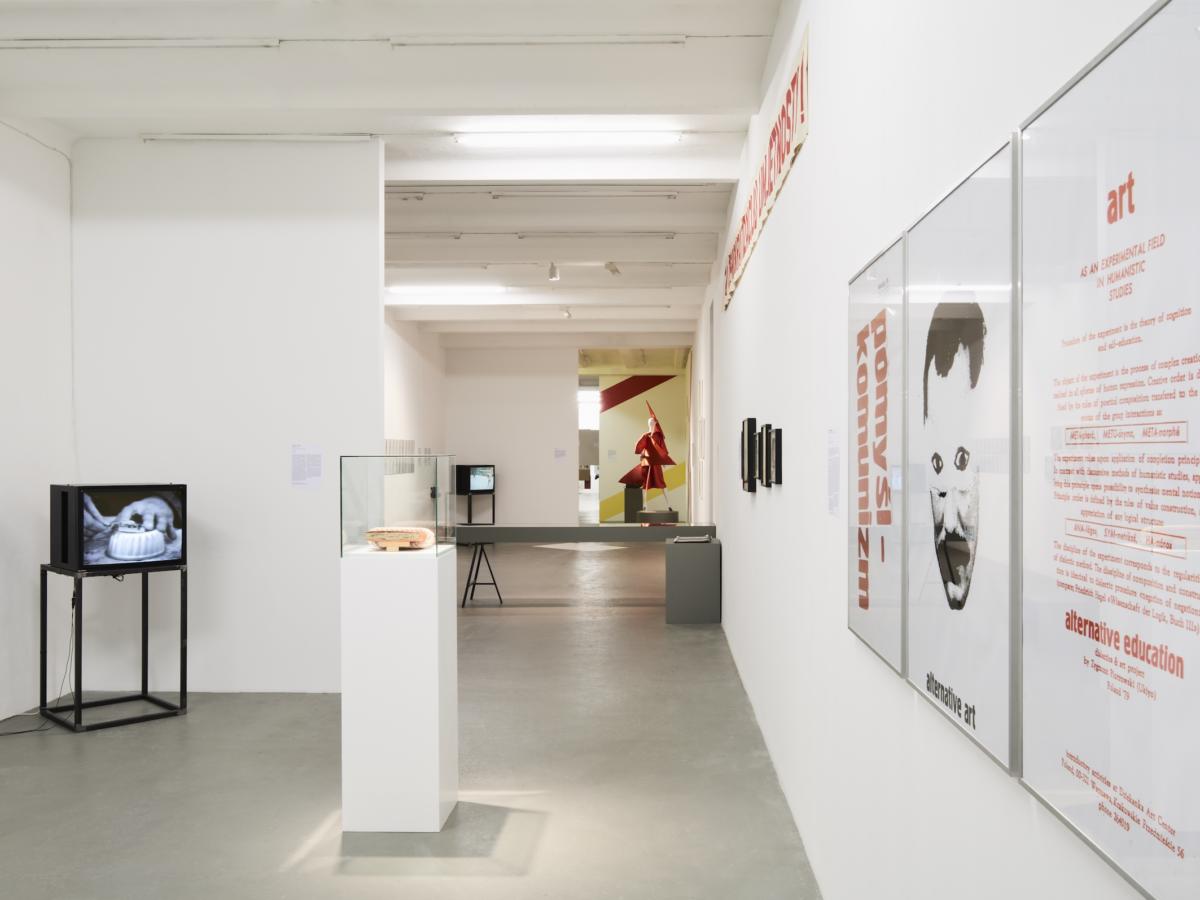
The Complexities of the Feminist Label
Though many of the works in the exhibition could be characterized as “feminist actions” by today’s standards, the difference between Western feminism and Eastern feminism (nonetheless feminism under communism) was not breached in the lecture series. In a landmark catalog on the exhibition Gender Check, edited by Bojana Pejic, which first brought the issue of gender in Eastern Europe to a Western European audience in the 2000’s, Keti Chukhrov writes about the subversion of the naked intimate flesh of the body under socialism. In her essay titled “In the Trap of Utopia’s Sublime Between Ideology and Subversion,” she explains: “the socialist body is a body caught between authority’s interdiction on pleasure and the body’s shame when it strives for forbidden imaginary pleasure that is uncontrolled by authority.” Pleasure, she explains, can be obtained only by its diversion into the sublime. The emancipated, modern woman was a working woman who was also a mother, though the perceived contradictions between the two (a contradiction of the West and the East) is something still felt in Eastern Europe today where the working childless woman is seen in opposition to the mother figure who is espoused by the Nation. This desexualization of woman, as Chukhrov calls it, was epitomized by the juxtaposition of work and pregnancy. In such contexts, Chukhrov writes: “pleasures of sex acquire the flavor of betraying or abandoning fellow citizens.” The politicization of the intimate sphere, made it so that sexual life effectively became desexualized. When viewing the naked body of Ewa Partum or Judit Kele in the exhibition of Left Performance Histories, one does not comprehend the nuances of sexuality and the female body under the ideology of the time. Nor does the lecture program supplement this missing, crucial contextualization. This seems similar to the problems of representations feminist leftist body art works from Eastern Europe often suffer in the West. The most famous artist from the time who entered the western Art History canon, Marina Ambromović, is often framed by her beautiful naked, white, abled female body and not the contradictions this body would have achieved in the times where she used it as a political tool for subversion. Even in Left Performance Histories, we see beautiful female bodies within photographic archives and the viewer marvels at the quintessential beauty, not grasping the form as a political statement. Additionally, Keti Chukhrov explains the paradoxes of being a feminist in Eastern Europe–one that is absolutely alive and well today. To be a feminist was to be seen as importing a Western model to a communist context that saw this issue as an issue of private property. To think like a Marxist was to think within the terms of the class struggle and the emancipation of woman could only be complete with the elimination of class distinctions.
Keti Chukhrov explains the paradoxes of being a feminist in Eastern Europe–one that is absolutely alive and well today. To be a feminist was to be seen as importing a Western model to a communist context that saw this issue as an issue of private property.
When viewing the exhibition Left Performance Histories, it is important to remember the political and social context in which the works were produced and how they were often framed in the time as actions that valorized the bourgeois opposition in the West. Additionally, it is paramount to remember how feminism was also framed as a Western import and that emancipation of woman was often achieved in some systems, for instance Yugoslavia in the 60s and 70s. However the focus on exhibition actions, which now find their homes in archives, could be a form that is revived today under rising levels of fascism and nationalism. Additionally, as museum spaces become more and more privatized and extensions of the art market, exiting these systems in order to draw attention to their perpetuation of inequality as well as money laundering could be a form that is taken up. Many of the artists who comprised Left Performance Histories turned not only to the streets but to their very own bodies to make gestures that would inevitably disseminate into the political sphere. Though these gestures inevitably cannot be contained within the bounds of a photograph or even in one single memory of the archive holder, the aura these works of art generate surpass the normative relations of the art system.
Imprint
| Artist | Vlasta Delimar, Orshi Drozdik, Tomislav Gotovac, Ion Grigorescu, Jürgen Hohmuth (chic, charmant & dauerhaft / ccd), Sanja Iveković, El Kazovszkij, Judit Kele, Tamás Király, László Lakner, Zbigniew Libera, Marijan Molnar, Sven Marquardt, Ewa Partum, Zygmunt Piotrowski, Christine Schlegel, Hans-Joachim Schulze & Peter Oehlmann (Gruppe 37,2), Irmgard Senf (Exterra XX), Mladen Stilinović, Sven Stilinović, Gabriele Stötzer, Tamás Szentjóby, Bálint Szombathy, Raša Todosijević, Želimir Žilnik |
| Exhibition | Left Performance Histories |
| Place / venue | neue Gesellschaft für bildende Kunst, Berlin |
| Dates | 3 February 2018 – 25 March 2018 |
| Curated by | Judit Bodor, Adam Czirak, Astrid Hackel, Beata Hock, Andrej Mircev, Angelika Richter |
| Photos | Hannes Wiedemann |
| Website | ngbk.de/en |
| Index | 2) Adam Czirak Andrej Mircev Angelika Richter Astrid Hackel Bálint Szombathy Beata Hock charmant & dauerhaft / ccd) Christine Schlegel El Kazovszkij Ewa Partum Gabriele Stötzer Hans-Joachim Schulze & Peter Oehlmann (Gruppe 37 Ion Grigorescu Irmgard Senf (Exterra XX) Judit Bodor Judit Kele Jürgen Hohmuth (chic László Lakner Marijan Molnar Mladen Stilinović nGbK Orshi Drozdik Raša Todosijević Sanja Iveković Sven Marquardt Sven Stilinović Tamás Király Tamás Szentjóby Tomislav Gotovac Vlasta Delimar Zbigniew Libera Želimir Žilnik Zygmunt Piotrowski |
